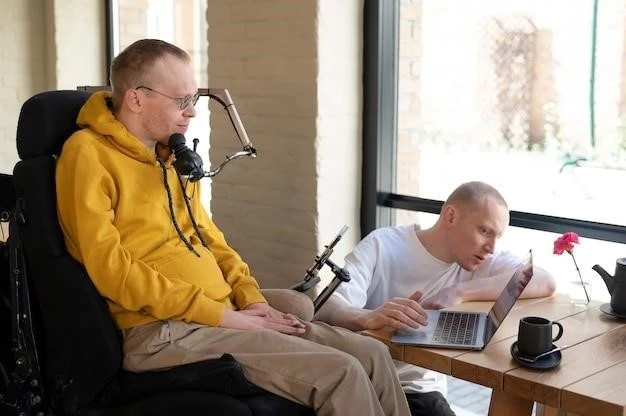Introduction
Hereditary spastic paraplegia (HSP) includes various neurodegenerative disorders characterized by progressive spasticity and weakness of the lower limbs‚ possibly associated with additional features.
Hereditary spastic paraplegia (HSP) encompasses various neurodegenerative disorders characterized by progressive spasticity and weakness of lower limbs‚ often accompanied by additional features such as mental retardation. The combination of spasticity and profound mental retardation can be found in individuals with genetic subtypes affecting neurodevelopmental or neurodegenerative components‚ presenting a spectrum of symptoms that include language impairment‚ dysarthria‚ and urinary frequency. Recognizing these complex interactions is crucial for diagnosis and personalized management strategies.

Clinical Presentation
Patients with hereditary spastic paraplegia (HSP) may present with a combination of spasticity‚ weakness‚ and other additional features such as mental retardation‚ language impairment‚ dysarthria‚ and increased urinary frequency.
Overview of Disease⁚ Spasticity Mental Retardation
Hereditary spastic paraplegia (HSP) comprises various disorders characterized by progressive spasticity and weakness of lower limbs‚ often associated with additional features like mental retardation‚ language impairment‚ dysarthria‚ and increased urinary frequency. This combination of symptoms can present in individuals with genetic subtypes affecting neurodevelopment or neurodegeneration‚ highlighting the diverse spectrum of manifestations and the importance of tailored diagnostic and management approaches.
Etiology
Hereditary spastic paraplegia (HSP) comprises a group of neurodegenerative disorders with genetic subtypes causing progressive spasticity and weakness‚ often accompanied by mental retardation.
Genetic Basis of Hereditary Spastic Paraplegia
Hereditary spastic paraplegia (HSP) is a genetically heterogeneous group of neurodegenerative disorders affecting lower limbs. More than 70 genetic subtypes have been identified‚ encompassing various patterns of inheritance; These genetic variations contribute to the diverse manifestations of spasticity and weakness seen in individuals with HSP.
Case Studies
Reported cases of hereditary spastic paraplegia (HSP) include individuals with varying degrees of spasticity‚ weakness‚ and mental retardation‚ often accompanied by language impairment and other symptoms.
Expanding Spectrum of RARS2 Gene Disorders
RARS2 gene disorders are associated with a range of symptoms including myoclonic epilepsy‚ mental retardation‚ spasticity‚ and extrapyramidal features‚ underlining the complexity of this genetic disorder and the importance of further research to understand its full spectrum of manifestations.
Conditions like Behr Syndrome or Genetic HSP may include symptoms such as spasticity‚ mental retardation‚ ataxia‚ and neurodegeneration‚ affecting patients differently within families.
Overview of Behr Syndrome
Behr Syndrome‚ also known as optic atrophy with characteristics like ataxia‚ spasticity‚ and mental retardation‚ is inherited in an autosomal recessive pattern‚ affecting individuals with early-onset optic atrophy and spinocerebellar degeneration.
Diagnosis and Differential Diagnosis
Diagnosing spasticity and mental retardation involves recognizing a combination of symptoms like spasticity‚ weakness‚ language impairment‚ dysarthria‚ and increased urinary frequency‚ often requiring a careful evaluation to distinguish from other conditions.

Associated Syndromes
Associated syndromes like Behr Syndrome and Genetic HSP may manifest with features such as spasticity‚ mental retardation‚ ataxia‚ and neurodegeneration‚ presenting variations in symptoms among affected individuals.
Treatment and Management
Managing spasticity and mental retardation involves addressing symptoms like spasticity‚ weakness‚ language impairment‚ dysarthria‚ and increased urinary frequency through personalized approaches.
Management of Spastic Paraplegia-47 (SPG47)
Spastic paraplegia-47 (SPG47) is characterized by neonatal hypotonia progressing to hypertonia and severe mental retardation with poor or absent speech development. Customized management strategies are essential for addressing the challenges associated with SPG47.
Prognosis and Complications
Patients with hereditary spastic paraplegia (HSP) may experience various complications resulting from central nervous system involvement and immune dysregulation‚ affecting prognosis and overall outcomes.
Central Nervous System Involvement and Immune Dysregulation
Central nervous system involvement in cases of hereditary spastic paraplegia (HSP) may lead to symptoms like spasticity‚ mental retardation‚ and cerebral calcifications. Immune dysregulation can range from autoimmunity to immunodeficiency‚ highlighting the diverse manifestations and potential challenges associated with these conditions.
Research and Therapies
Exploring pharmacologic therapies is crucial for managing spasticity associated with conditions like hereditary spastic paraplegia (HSP) and mental retardation‚ aiming to improve patients’ quality of life.
Pharmacologic Therapies for Spasticity
Pharmacologic therapies play a vital role in managing spasticity associated with hereditary spastic paraplegia (HSP) and mental retardation. These therapies aim to alleviate symptoms like spasticity‚ weakness‚ language impairment‚ dysarthria‚ and increased urinary frequency to enhance the quality of life for affected individuals.
